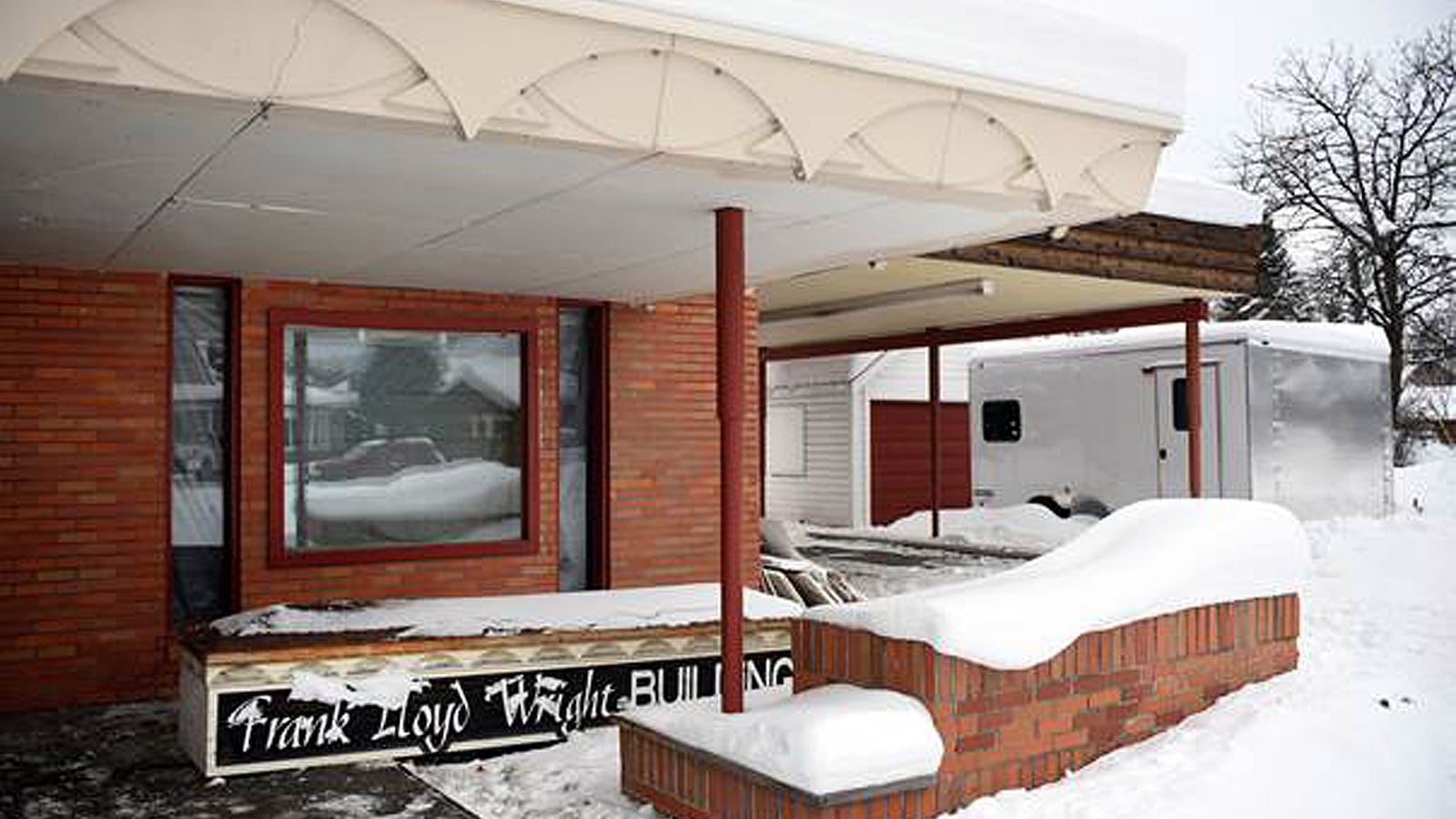The frantic race is on to find a buyer with $1.7 million to save a Frank Lloyd Wright building in danger of demolition in Montana.
The deadline: tomorrow, Wednesday, Jan. 10, 2018.
Multimillionaire developer and horse trainer Mick Ruis bought the Lockridge Medical Clinic Building in Whitefish, Montana, in 2016.
The building, listed in the National Register of Historic Places, was one of the final structures Wright designed in 1958, and was built in 1959 after he died. It has been a clinic, bank, and lawyers’ office.
Ruis put the property on the market last year, and has set a deadline of Jan. 10 for offers to buy it. Asbestos removal is currently underway there.
No offers have so far been forthcoming, although groups including the Chicago-based Frank Lloyd Wright Building Conservancy and Montana Preservation Alliance are working overtime to find a buyer or buyers to safeguard the building’s future.
Ryan Purdy, Ruis’ legal counsel, told The Daily Beast: “The building has been for sale for over a year. It’s a little bit frustrating that there are all these people are rushing to get things done when we’ve had it posted for sale and we’ve been talking with interested parties for over a year.”
Ruis, said Purdy, had delayed development of the site to see if potential purchasers, including preservation groups, would come forward to buy the building. At this stage, said Purdy, “You’ve got to make choices and decisions.”
Asked if Ruis—who declined an interview through Purdy—planned to delay plans to develop the site given the surge of public interest in the possible loss of the building, Purdy gave a succinct answer: “No.”
Preservation groups, said Purdy, “have had plenty of time to come in and accomplish something and no one did.”
After Jan. 10, Ruis would be “no longer interested in talking to anybody,” said Purdy. “I have no clue whether he plans to raze it or move it.”
There was “no movement” on delaying the deadline after Jan. 10, said Purdy. “We’re not at their [preservation groups’] whim.” As of now, there was no offer, he added. “I don’t have anything on my desk, if that’s what you’re asking.”
Montana Preservation Alliance Executive Director Chere Jiusto told The Daily Beast that it was going to “respectfully” ask for an extension for the Jan. 10 deadline.
Jiusto said there had been confusion over what Ruis’ intentions had been when it came to the property. “We sincerely apologize for the misunderstandings with the owner,” she told The Daily Beast. “We understand that he has been patient, but we need more time.”
The building was a practically designed beauty, Jiusto said. “It is simple, unadorned, but considered by scholars to be one of his finest works because it really carried his Usonian visions to fruition. It really is a kind of small treasure.”
Jiusto said the former clinic had certain Wright hallmarks: horizontality, a concrete awning framing its entrance, a lot of glass, and a central hearth.
“Even though it is modest you can see the hand of a master in the design of this building,” Jiusto told The Daily Beast. “However, we live in the real world, and the community of Whitefish is growing quickly. Real estate values have increased dramatically, so there is interest to develop the town to a higher density. So we do see conflict between important historic buildings and the hopes of developers to find adequate and appropriate space for new construction.”
The clinic is one of three surviving buildings of Wright’s in Montana: the other two are cabins he designed in 1905 as part of the Alpine Meadows Ranch development in Darby.
Joel Hoglund, communications and events director of the Frank Lloyd Wright Building Conservancy, said the cabins “hail from the earliest part of his career and the Lockridge clinic building from the very latest.”
Jiusto told The Daily Beast she was optimistic the clinic building could be saved, and asked that Ruis give preservation groups the rest of the winter to find the money to save the building.
“Mick Ruis has been very community-minded in this part of Montana,” she said. “He’s been a wonderful benefactor who’s come in and helped revitalize Columbia Falls, one of the small towns in Western Montana.
“I believe he is very well-intended. He did agree a year ago not to demolish the building. We’re willing to work with him with renewed effort, and we hope it won’t take long. We really look forward to working with him in a positive way.”
In an interview with The Daily Beast, Barbara Gordon, executive director of the Frank Lloyd Wright Building Conservancy, noted the architect’s pre-eminence, and continued influence with today’s architects.
The Conservancy has just celebrated the 150th anniversary of his birth.
Threats to, and even the destruction of, Wright’s buildings and interiors are not new. His Hoffman Auto Showroom at 430 Park Ave. in New York City was demolished in 2013. The William S. Carr House in Grand Beach, Michigan, was razed in 2004.
“Any time a historical property changes in ownership this can happen,” said Gordon. “In this [Whitefish, Montana] situation, the developer wants to develop the downtown area, and this building doesn’t fit his plan.
“My impression is that the developer didn’t know the significance of Wright. He put his demolition plans on hold when the public outcry happened.”
It was not an unusual situation, Gordon added, for Wright properties to be priced over a million dollars, and be on the market for a year or more.
The Conservancy doesn’t own properties itself, she emphasized, but was “working feverishly” to find a buyer or buyers. “We’re having conversations with people right now,” she said. “We’ve got things cooking. We’re going to work to the last minute.”
Would Gordon like the Jan. 10 deadline extended? “That would be very appreciated,” she said.
“Ruis was preparing for the building to be demolished,” she said, but “anything’s possible. I’m hopeful we can save it. We’re going to do everything we can to get a win-win for everybody. I hope people see the seriousness of this situation.”
Hoglund told The Daily Beast that, as the story receives more media attention, so people are sending pictures of their visits to the Lockridge clinic. “People would drive across the country to see it. This is a work of art. You don’t have people flying from Japan to see a strip mall from a no-name architect, but they will travel to see a Frank Lloyd Wright building.”
“People are pretty shocked,” said Gordon. “They have reached out to us to say they are very surprised in this day and age that anyone would consider tearing down a Frank Lloyd Wright building. But unfortunately these things do happen.”
If the building is demolished, one final ray of hope is supplied by Hoglund. When Wright’s Francis W. Little House in Minnesota was demolished in 1972, there was such outrage that parts were taken and are preserved in various museums, including New York City’s Metropolitan Museum of Art, where the living room has been reconstructed and exists as a work of art in its own right. (Other parts of the structure exist in museums in Pennsylvania and Minnesota.)
Last year, another Wright property which had been on the market for 10 years was disassembled in Minnesota to be reassembled in Pennsylvania.
Of the race against time in Montana, Hoglund told The Daily Beast: “When a building like this from an architect like Wright is going to be lost people all over the world realize what the loss will be to culture.”



